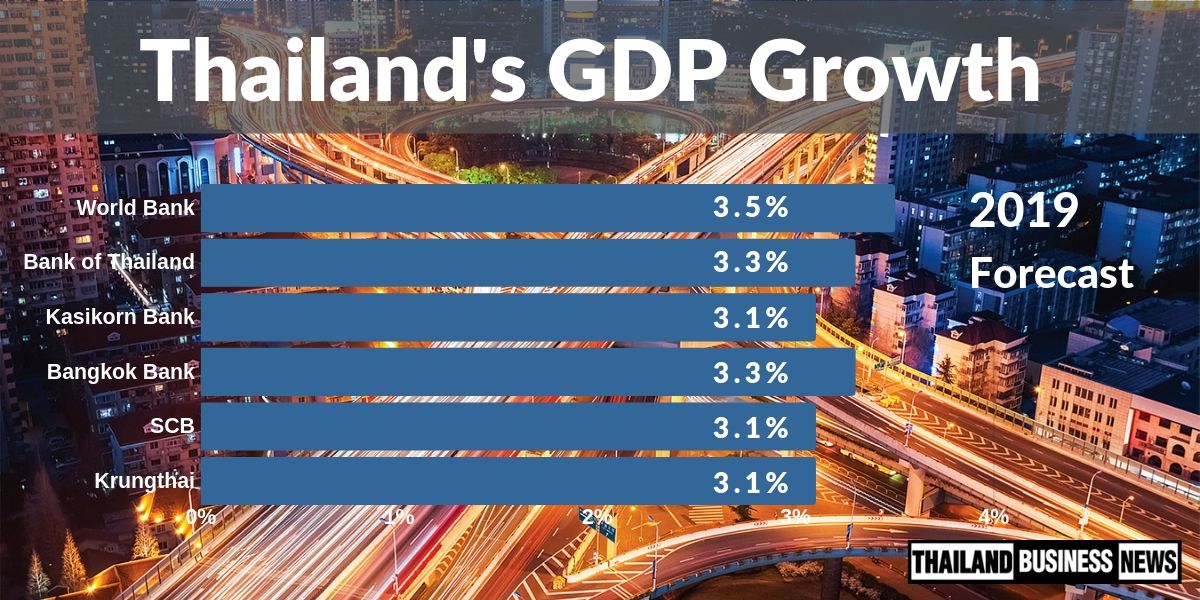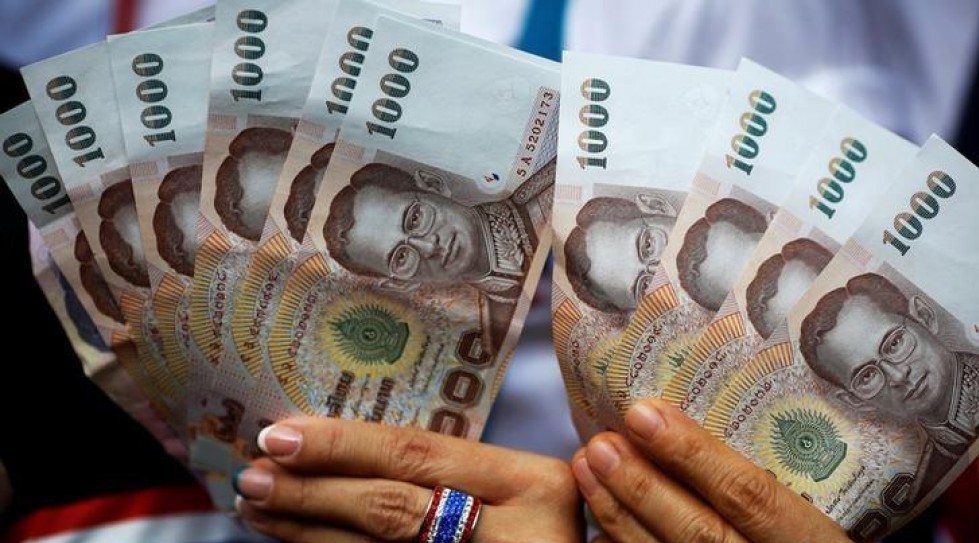According to the World Bank’s Thailand Economic Monitor (July edition), risk to the economic outlook in Thailand are primarily domestic.
Political uncertainty is a key risk, and lingering doubts about the cohesiveness of the newly established 19-party coalition government and/or delays in the implementation of large planned public infrastructure projects could negatively impact both investor sentiment and consumer confidence, thereby weakening domestic demand.
In recent years, Thailand’s economy has expanded at a slower pace than those of its regional comparators, says the World Bank.
Growth forecast for 2019 downgraded from 3.8 percent to 3.5 percent
Meanwhile, ongoing trade tensions between the U.S. and China could further weaken demand for Thailand’s exports and discourage private investment in export-oriented industries.
Due to rising external headwinds, the growth forecast for 2019 has been downgraded from 3.8 percent to 3.5 percent. Private consumption is expected to drive growth in 2019, supported by private investment, and public infrastructure spending.
Today the Economic Intelligence Center (EIC), Siam Commercial Bank’s research unit, has cut its forecast for the country’s 2019 economic growth to 3.1% from the 3.3% previously seen.
Thailand’s GDP growth rate is projected to recover gradually over the near term assuming policy continuity and the implementation of large public infrastructure projects, especially those related to the Eastern Economic Corridor. Given Thailand’s strategic location, continued trade integration could support trade in goods and services, potentially compensating for some of the external headwinds.
“Policy continuity and the implementation of planned public infrastructure projects in the Eastern Economic Corridor will be of vital importance to sustain growth,” said Birgit Hansl, World Bank Country Manager for Thailand, “Increased regional integration and making better use of Thailand’s strategic location could support trade in goods and services.”
The current-account surplus continued to shrink in Q1 2019
After peaking at 11.7 percent of GDP in 2016, the current-account surplus narrowed from 2018 through Q1 2019, due largely a decline in the growth rate of goods exports from 9.8 percent in 2017to 7.2 percent in 2018, reflecting the slowdown in global growth and worsening terms of trade. I
Overall, the current account surplus of 7.0 percent of GDP combined with the financial account deficit of 4.3 percent of GDP led to a balance of payments surplus and accumulation of foreign-exchange reserves to US$172 billion, equivalent to 37 months of goods and services imports or 1.9 times the short-term external debt stock
The fiscal deficit has remained manageable despite declining revenues
The budgetary central government fiscal deficit widened from 0.9 percent of GDP in 2016 to 2.2 percent in 2017, then narrowed slightly to 1.9 percent in 2018 (Figure 13). The deficit was largely financed through net domestic borrowing, which accounted for more than 80 percent of total net borrowing
Meanwhile, the Thailand Economic Monitor said Southeast Asia’s second-largest economy has made large strides in expanding access to financial services, as seen by the fact that 82% of Thai adults have a formal bank account and the gender gap is small.
Thailand has made large strides in expanding access to financial services
Today, 82 percent of Thai adults have a formal bank account and the gender gap is small. However, the report finds that challenges remain in the quality of digital financial services, as well as in access to broadband services.
“Expansion of digital services to the underserved would bring about new economic opportunities and support a reduction of inequality as envisaged in Thailand’s national strategy,” said Kiatipong Ariyapruchya, World Bank Senior Economist for Thailand. “As fintech activities continue to grow in Thailand, inter-governmental collaboration and building a supportive environment for a sound fintech ecosystem would be important.”
About the author
Bangkok Correspondent for Siam News Network. Editor at Thailand Business News







